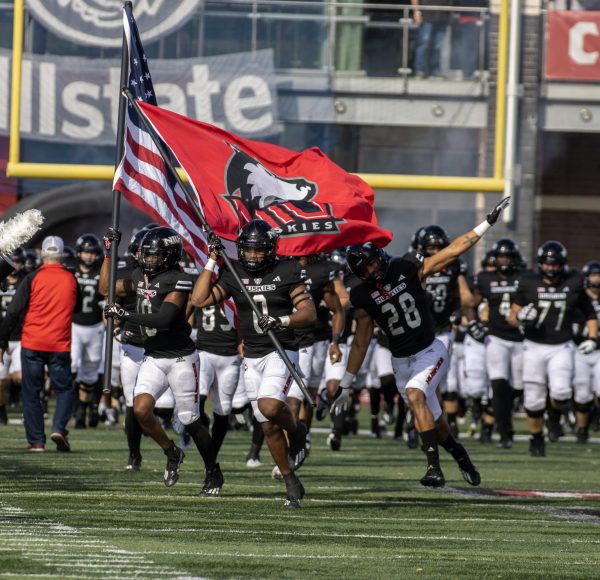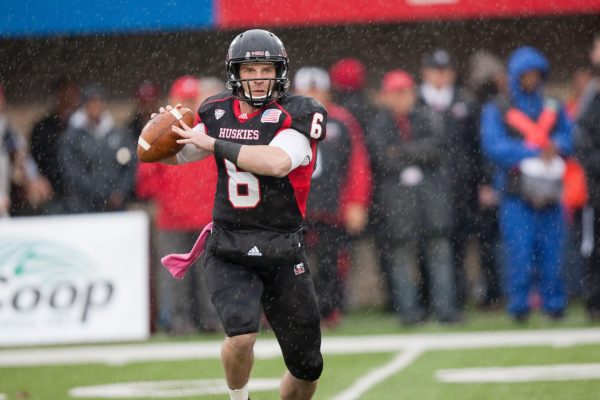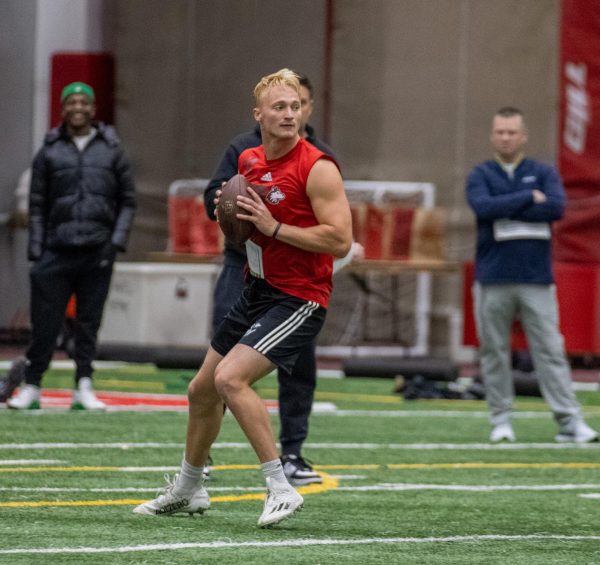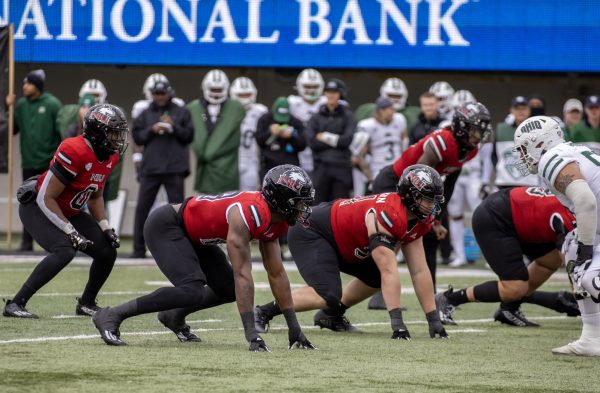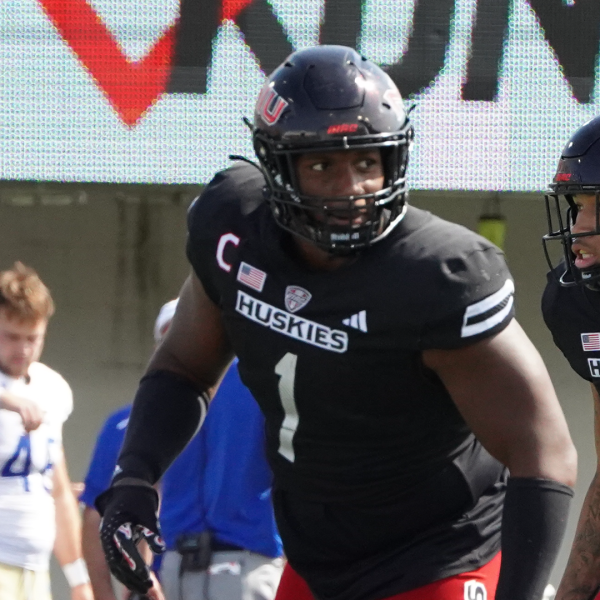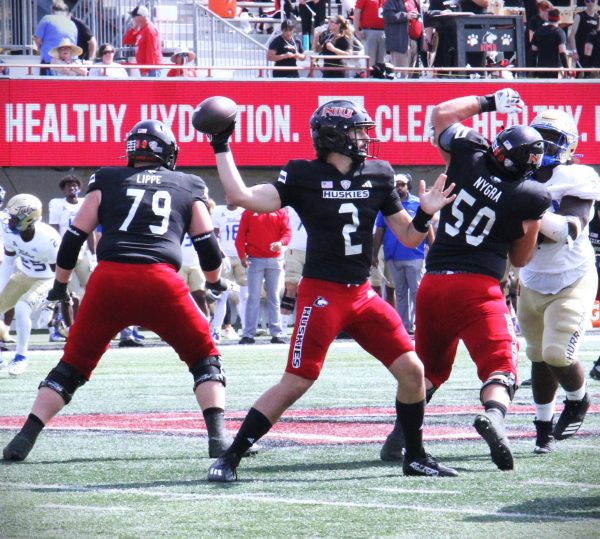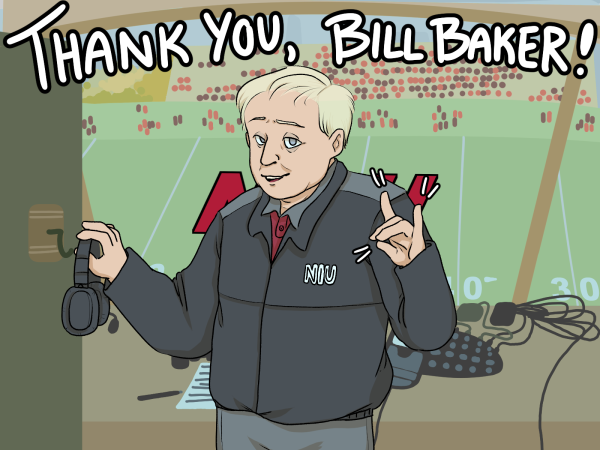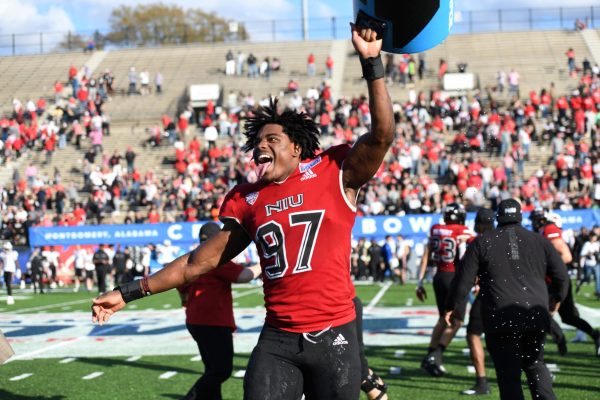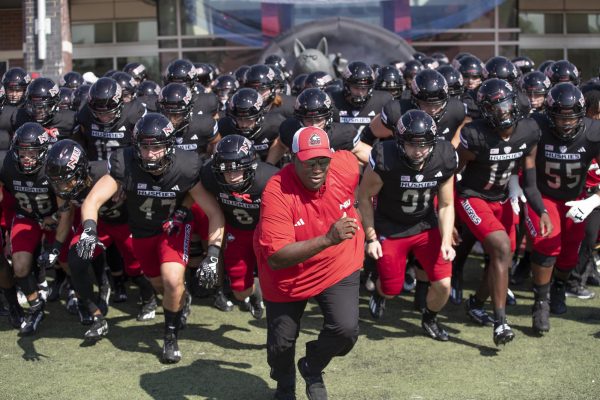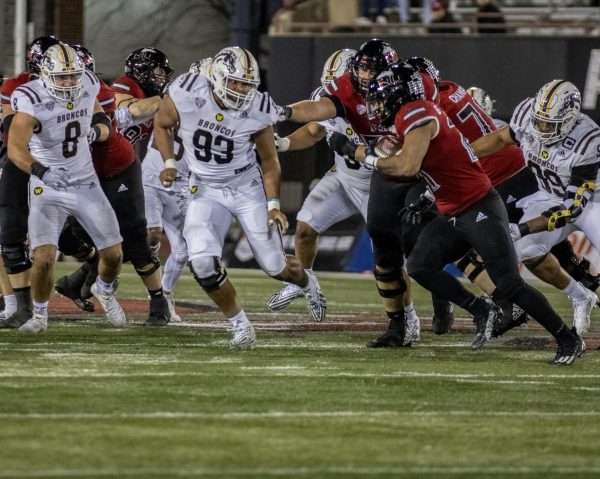Huskies spreading the wealth
August 30, 1990
Like practically everything else surrounding Huskie football, the new offense, which isn’t so new, revovles around quarterback Stacy Robinson.
Two years ago the spread option formation, cousin to the run-and-shoot attacks employed by the University of Houston and the Detroit Lions, was just a versatile idea looking for a similarly endowed leader.
“It’s (the spread option) something we have gradually evolved to,” said Huskie head coach Jerry Pettibone. “We couldn’t do as much of this with (former Huskie QB) Marshall Taylor as we can with Stacey. Stacey’s a taller athlete, he can drop back and throw the ball. Marshall was a shorter guy and we just didn’t have the freedom to develop it to the point that we have with Stacey.”
Robinson will throw the ball more than last year’s 11 pass-per-game average, but still not enough to apply the dreaded pefix “Air” to his name or the offense. The spread, with its four-receiver potential, will not replace the wishbone offense which vaulted Robinson to the top of the country’s rushing quarterback class last year; it will help it. Opponents will no longer be able to “cheat” by crowding defenders around the line of scrimmage, anticipating the run.
“We’re able to put more pressure on defenses with the spread set,” said Pettibone. “It spreads out the defense a lot more, they’ll have to defend the whole field a lot more than they did in our tight wishbone formation.”
From a defense man’s view, the spread ultimately depends on the spreaders.
“Personnel in a spread option, if it’s a good personnel, is tough to defend,” said Huskie defensive coordinator Paul McGuire. “If you can get the offense spread out, then the defense tries to defend the field as well as the formation. Now there’s more cracks more a guy with great athletic ability and speed like a Stacey Robinson or (Huskie fullback) Adam Dach.”
“I don’t think anybody would be crazy enough to try to defend us man-to-man because we can still run our option,” Pettibone said.
The Huskies’ success with the wishbone option (the quarterback either hands off to the fullback, keeps the ball or pitches to a halfback depending on the defense) strengthens the spread’s chances and vice versa.
“The option is what puts the pressure on,” said McGuire. “Spread offenses have been around. You have a spread offense to make the defense defend you the whole width of the field as well as being able to threaten them vertically. Now add the great option offense with that: now you’ve got the problems it can create through the seams.”
In the basic spread formation, there will be two receivers instead of the wishbone’s one, as the tight end is either replaced or shifted out wide. The halfbacks move from their wishbone position- behind and to the right and left of the fullback and quarterback- to the gaps between the linemen and receivers.
Once set, the fun can begin. Both halfbacks may line up with a receiver on one side. One halfback can go in motion to decoy or be pitchman; the possibilities, as they say, are endless.
The beauty of the new look is its simplicity- assignments will change little, if at all.
“It hasn’t increased the learning a lot for any of our players,” said Pettibone.
QUARTERBACK- With possibly four targets on passing downs, Robinson will have to make quick reads: a “hot” receiver, a secondary receiver and a last resort. Pettibone says Robinson will keep the ball more out of the spread because the pitchmen (halfbacks) are not as available as in the wishbone. Stacey’s drop steps will stay the same.
FULLBACK- Adam Dach (164 rushes, 714 yards), Erik Jensen (16-75) and Chris Montgomery (32-125) will block a little more An the spread. “That’s our job anyway. We don’t get the ball too much so I don’t think its gonna be that much different for us,” said Dach. “I think there’s an opportunity maybe to catch a couple more passes, maybe two.”
ECEIVERS- More opportunities, same patterns for starters Mark Clancy and Kurt Cassidy. What one receiver did in the wishbone, two will do: again, spreading the defense. Most patterns will be shorter, with a few timely bombs to wake the defense from its rushing-induced slumber.
“They’re planning on throwing the ball more and we’d love to catch the ball more, of course,” said Clancy, who has 21 catches for 457 yards in 1988 and ‘89.
ALFBACKS- These speedsters’ (Mike Strasser, Brett Schroeder- starters; Raymond Patterson, Corey Ray- backups) jobs change little in their new set-up.
“They just put more pressure quicker on the defense if they’re gonna go out for a pass by lining up (in the gap). They still have to catch the ball, still gotta block but they’re more of a threat in the passing game,” said Pettibone.
TIGHT END- Many tight ends would move to the sideline with the addition of another receiver. Senior Claude Royster, a former high school receiver, will just move a few yards to the left or right and enjoy a break from the “pits”.
“We beefed him up to be a bigger guy to play tight end, but he’s still got the speed and the hands to run routes,” said Pettibone. “A real plus of having Royster in the game is that they (the defense) can’t predict that we’re gonna go with this formation until we line up and he splits out.”
LINEMEN- The large guys change nothing. Much of the blocking is disguised play-action run blocking, designed to bring up the safties.
In other words, those who are aching to shout, “If it’s not brokeek, don’t fix it,” can continue to ache.
“We can take our reputation, which is running the football, and still do that better than anyone else in the country,” said offensive coordinator Mike Summers. “We wanna take that and continue to do that well, but we wanna also take that and use that against people by spreading the formation out.”


